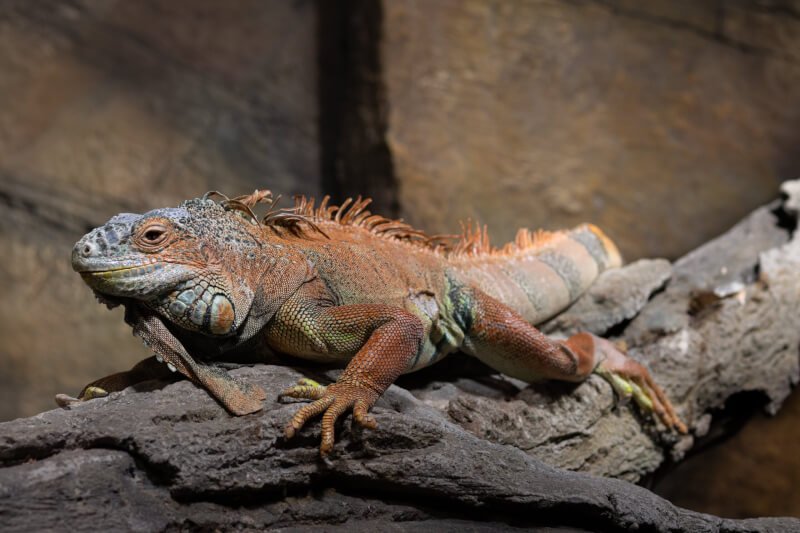If your reptile is showing signs of a fungal infection, you may be wondering how to treat it and restore your scaly friend to its healthy, vibrant self. Fungal infections in reptiles can be common, but with the right approach and care, they can be effectively treated. In this article, we will explore some tried-and-true methods for treating fungal infections in reptiles, providing you with the information you need to assist your reptile friend in their recovery. So, let’s get started on the path to a happy and healthy reptile!

Identifying a Fungal Infection
Observing Symptoms
When it comes to treating a fungal infection in your reptile, the first step is to identify the symptoms. Look for signs such as abnormal shedding, discolored or patchy skin, a white or gray powdery substance on the skin or shell, or any changes in behavior or appetite. These can all be indications that your reptile may have a fungal infection.
Collecting Samples for Diagnosis
To confirm a fungal infection, it’s important to collect samples for diagnosis. This can be done by gently swabbing the affected area with a sterile cotton swab. Be sure to wear gloves to avoid cross-contamination. The collected samples can then be sent to a veterinary laboratory for analysis and identification of the specific fungus involved.
Seeking Veterinary Advice
Finding an Exotic Reptile Veterinarian
Treating a fungal infection in reptiles requires specialized knowledge and expertise. It’s crucial to find a veterinarian who specializes in exotic reptiles, as they will have the necessary experience to diagnose and treat these types of infections. You can start by asking for recommendations from fellow reptile owners or searching online directories for exotic veterinarians in your area.
Setting up an Appointment
Once you have found a suitable veterinarian, it’s time to set up an appointment. Call the clinic and explain your reptile’s symptoms and concerns. The veterinary staff may ask you for additional information, so be prepared to describe the symptoms in detail. They will then schedule an appointment for you to bring your reptile in for a thorough examination and diagnosis.

Quarantine and Isolation
Separating the Infected Reptile
To prevent the spread of the fungal infection to other reptiles, it is important to separate the infected reptile from the rest. Set up a temporary enclosure or isolate the reptile in a separate room. This will minimize the risk of transmission and allow for focused treatment and monitoring.
Maintaining Proper Hygiene
To effectively treat a fungal infection, maintaining proper hygiene is crucial. Clean and disinfect all enclosures, accessories, and your hands before and after handling the infected reptile. Use a reptile-safe disinfectant to ensure thorough sanitation. Additionally, avoid sharing equipment or housing with other reptiles to minimize the potential spread of the fungus.
Creating the Ideal Environment for Recovery
Optimizing Enclosure Conditions
Creating the ideal environment for your reptile’s recovery is essential. Ensure that the enclosure is large enough for your reptile to move around comfortably and has proper ventilation. Provide hiding spots and climbing branches for enrichment. Additionally, choose a substrate that is easy to clean and disinfect to maintain a clean and hygienic environment.
Monitoring Temperature and Humidity
Proper temperature and humidity levels are crucial for the health and recovery of your reptile. Different reptile species have specific temperature and humidity requirements, so it’s important to research and maintain these conditions accordingly. Invest in a reliable thermometer and hygrometer to monitor and adjust the levels as needed. Provide a warm basking spot and a cooler area for your reptile to regulate its body temperature.

Topical Treatments
Antifungal Creams and Ointments
Topical treatments, such as antifungal creams or ointments, can be effective in treating fungal infections in reptiles. Your veterinarian will prescribe the appropriate medication based on the specific fungus involved. Follow the instructions provided by your veterinarian carefully and apply the cream or ointment to the affected areas as directed. Be gentle and avoid causing any additional stress or discomfort to your reptile during the application process.
Proper Application Techniques
When applying creams or ointments, it’s important to practice proper application techniques. Ensure that the affected area is clean and dry before applying the medication. Use a clean cotton swab or your fingertips to apply a thin layer of the cream or ointment, gently massaging it into the skin. Avoid applying near the eyes or mouth, as reptiles may lick or rub these areas, potentially ingesting the medication.
Oral Medications
Prescription Antifungal Drugs
In some cases, oral medications may be necessary to effectively treat a fungal infection in your reptile. Your veterinarian may prescribe antifungal drugs that need to be administered orally. These medications are specifically formulated to combat the fungus internally and help eradicate the infection from within the reptile’s body.
Administering Medication
Administering oral medications to reptiles can be challenging, but it’s important to follow the veterinarian’s instructions carefully. Some medications may need to be given directly into the reptile’s mouth using a syringe or dropper, while others may need to be mixed with food. It’s crucial to ensure that your reptile consumes the full dose of medication as prescribed to maximize its effectiveness.

Adjusting the Diet
Balancing Nutritional Needs
A well-balanced diet is important for supporting your reptile’s overall health and immune system. When treating a fungal infection, it’s crucial to assess and adjust your reptile’s diet accordingly. Consult with your veterinarian for guidance on the appropriate diet for a reptile with a fungal infection. They may recommend reducing the amount of fruit or sugary foods and increasing the intake of fresh greens, vegetables, and high-quality protein sources.
Supplementing with Probiotics
Probiotics can play a beneficial role in supporting your reptile’s gut health during the treatment of a fungal infection. These good bacteria help maintain a healthy balance in the reptile’s digestive system and boost the immune system. Your veterinarian may recommend probiotic supplements or specific food items that can provide probiotic benefits. Follow their recommendations and guidelines for the appropriate dosage and frequency of supplementation.
Enhancing Immune System
Providing Adequate UVB Lighting
UVB lighting is crucial for reptiles, as it helps them produce vitamin D3, which is essential for the absorption of calcium and overall immune function. Ensure that your reptile’s enclosure has a proper UVB light source that provides the necessary UVB output. Follow the manufacturer’s recommendations for the distance and duration of exposure to the UVB light, as different reptile species have varying requirements.
Boosting Vitamin and Mineral Intake
Reptiles with fungal infections may benefit from an increased intake of essential vitamins and minerals to support their immune system. Consult with your veterinarian for specific recommendations on reptile supplements that can provide the necessary vitamins and minerals. Follow the dosage instructions carefully to avoid over-supplementation, as excessive intake of certain vitamins or minerals can be harmful to reptiles.

Regular Cleaning and Maintenance
Disinfecting Enclosure and Accessories
Regular cleaning and disinfection of your reptile’s enclosure and accessories are crucial to prevent recontamination and maintain a clean environment for recovery. Clean all surfaces with a reptile-safe disinfectant, ensuring that you remove any visible debris or waste. Pay extra attention to areas where fungi tend to thrive, such as damp or moist spots. Rinse thoroughly and allow all surfaces to dry completely before reintroducing your reptile.
Preventing Recontamination
To prevent recontamination, it’s important to practice good hygiene and preventive measures. Wash your hands thoroughly before and after handling your reptile, especially if you have other reptiles in your care. Avoid introducing new reptiles into your environment without proper quarantine and testing procedures. Regularly inspect and sanitize any tools or accessories used for reptile care to minimize the risk of spreading the fungus.
Monitoring Progress and Follow-up Care
Tracking Symptoms
Throughout the treatment process, it’s crucial to closely monitor your reptile’s progress and track any changes in symptoms. Keep a record of any improvements or worsening of symptoms, as well as any side effects from medications. This will help you and your veterinarian gauge the effectiveness of the treatment plan and make any necessary adjustments.
Scheduling Check-ups
Regular check-ups with your reptile veterinarian are essential for monitoring the progress and ensuring continued care. Follow their recommendations for follow-up visits and be sure to ask any questions or address any concerns you may have during these appointments. Your veterinarian will provide guidance on the duration of treatment and the steps to take for a full recovery.
Treating a fungal infection in a reptile requires a comprehensive approach that includes veterinary advice, proper hygiene, and the creation of an ideal environment for recovery. By following the guidelines outlined in this article, you can give your reptile the best chance at a successful treatment and a healthy, fungus-free life. Remember, always consult with a qualified veterinarian for specific diagnosis and treatment recommendations tailored to your reptile’s unique needs.


